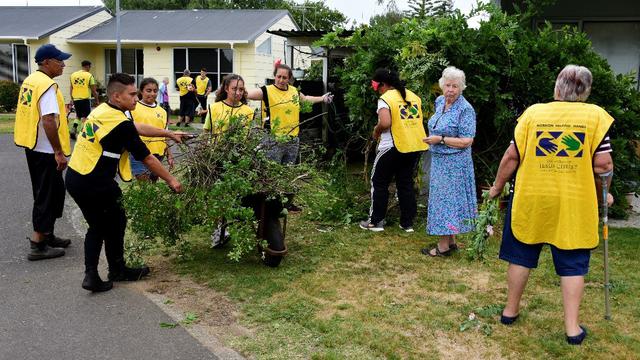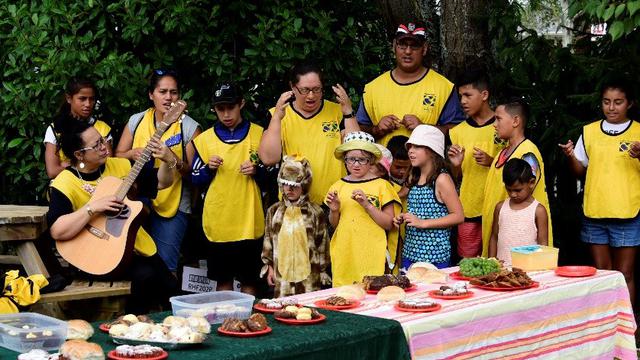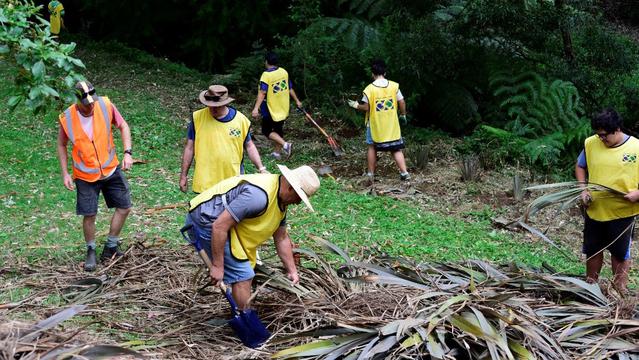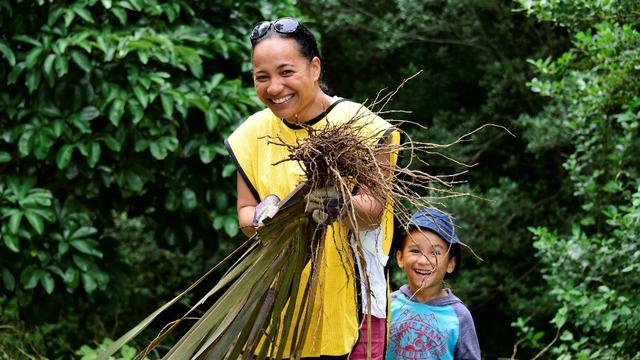The good work achieved during the Hamilton Helping Hands event last February has laid the ground work for The Church of Jesus Christ of Latter day Saints and the Hamilton City Council to partner on more large scale projects in the near and distant future.
“For example, Hamilton City Council is hoping teams of helpers from the Church can also participate in major planting and mulching projects scheduled for later this year.” said Vicki Lee Wihongi, regional public affairs director for the Church.
| Temple Square is always beautiful in the springtime. Gardeners work to prepare the ground for General Conference. © 2012 Intellectual Reserve, Inc. All rights reserved. | 1 / 2 |
“The traditional February time frame for Helping Hands activities is changing to the month of September, so this type of project is feasible.”
During February the city and the Church teamed up on 12 projects across the city on one Saturday.
"It is certainly something we would like to do again,” said Wihongi. “The organizing team from both the Church and the City Council worked brilliantly together.
“The outcomes from that first big project were really positive, and from all accounts, all involved got a lot out of it. So we'd love to contribute to something of a similar nature and scale again.”
Two of the 12 February projects not previously detailed in press reports are examples of the type of Helping Hands collaborative projects completed:
St. Vincent DePaul Retirement Village
Helping Hands volunteers from The Church of Jesus Christ of Latter-day Saints (Mormons) recently descended on the grounds of St. Vincent DePaul Retirement Village in Hamilton, New Zealand armed with rakes, shovels, trimmers, buckets, rags, gloves and sunblock.

The goal was to trim, mow, and tidy the yards and gardens of the elderly residents in the 46 units. In addition, one team was kept busy washing their cars inside and out.
More than thirty volunteers from the Glenview area congregations of the Church spent over four hours helping the residents with their yard work, window cleaning, and various other tasks.

Volunteers Guy and Jean MacBeachen were happy with the morning’s work. Jean said, “We’ve had such a good time. If you’re feeling depressed, just lift yourself by going to do something for somebody else.”
A village resident, “Sister Ann Marie said, “We think it’s wonderful. They’re a Godsend! And they know what to do—weeding, pruning, trimming hedges, and getting rid of rubbish. They are such responsible people; and they are happy and smiling.”

Following the morning’s work, a large buffet table of homemade lunch foods was set up under the trees and the residents were treated to a sing-along with guitar accompaniment, complete with performances by children.
Porritt Stadium
The Porritt Stadium Project involved transplanting Harakeke plants (New Zealand flax) in a way to beautify the surroundings and provide sanctuary for native animals and birds.
Speaking about the effort, Jeannett Bell from Hamilton City Council Parks and Open Spaces said, “Hamilton is all about natural—keep the birds happy. We’re very grateful to have the crew here. We’re doing something for the environment and the community and the wildlife.”

“Without volunteer help, these plants would’ve been decayed and rotten because they take time to replant. We certainly appreciate having these people come from the Church to do this. We wouldn’t have the manpower to do it otherwise,” said city employee Carl Johnstone.
One of the Church volunteers, Yasmin Sadler, expressed her happiness to be part of something so meaningful, “Giving service is important. This is a good opportunity to do this with all of these people and have fun doing it!”

Adele Sauer Dinsdale and her son Jarom happily worked side by side. Speaking of her son, she said, “I’m trying to teach him service at a young age. It reminds me of what I did in Australia after the Brisbane floods–it’s great to serve, restoring the parks.”
Mormon Helping Hands volunteers are quickly recognized by their bright yellow vests. They are everyday citizens from around the world who recognize the value of reaching out to lend a helping hand to others. They often partner with government and non-profit organizations to support and improve the communities where they live.